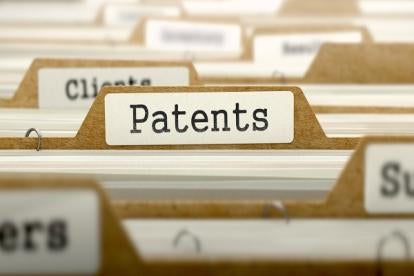In a recent decision, the Patent Trial and Appeal Board held that a reference used to support each of the grounds for invalidity did not qualify as prior art. The case, GoPro v. Contour IP,[1] involved the Board’s analysis of whether a reference, the GoPro Catalog, was publicly accessible to persons of ordinary skill in the art. Because the Petitioner failed to establish that reference was publicly accessible to ordinary artisans, the PTAB rejected the instituted prior art challenges without reaching the merits of the obviousness grounds. The Board also denied the parties’ respective admissibility challenges to evidence relating to the GoPro Catalog.
Key Takeaway: In IPRs, the petitioner has the burden of proving that a reference relied on in the petition as a printed publication was, in fact, accessible to members of the interested public who are of ordinary skill in the art. In particular, when relying on materials presented at a professional event, such as trade show or convention, the petitioner must show that the event was known and accessible to ordinarily skilled artisans in the relevant field of technology.
 Case Facts. GoPro filed an IPR petition challenging Contour’s patent no. 8,896,694 (the ’694 patent), which is directed to an integrated hands-free, action sports video camera for remote image acquisition control and viewing. The PTAB instituted an IPR trial of claims 1–20 on two grounds of obviousness. Both grounds relied upon the GoPro Catalog as a secondary reference. According to Petitioner, the GoPro Catalog was distributed at the Tucker Rocky Dealer Show in 2009, an event that predated the priority date of the ’694 patent. After Contour filed its Patent Owner response, Petitioner filed its reply; the parties disagreed, inter alia, as to whether the GoPro catalog qualified as a prior art reference. In addition, the parties each moved to exclude certain evidence relating to the catalog. Upon holding a combined oral hearing, the PTAB issued a final decision that ruled on the obviousness challenge as well as the motions to exclude.
Case Facts. GoPro filed an IPR petition challenging Contour’s patent no. 8,896,694 (the ’694 patent), which is directed to an integrated hands-free, action sports video camera for remote image acquisition control and viewing. The PTAB instituted an IPR trial of claims 1–20 on two grounds of obviousness. Both grounds relied upon the GoPro Catalog as a secondary reference. According to Petitioner, the GoPro Catalog was distributed at the Tucker Rocky Dealer Show in 2009, an event that predated the priority date of the ’694 patent. After Contour filed its Patent Owner response, Petitioner filed its reply; the parties disagreed, inter alia, as to whether the GoPro catalog qualified as a prior art reference. In addition, the parties each moved to exclude certain evidence relating to the catalog. Upon holding a combined oral hearing, the PTAB issued a final decision that ruled on the obviousness challenge as well as the motions to exclude.
Petitioner’s Motion to Exclude: With its preliminary response, Patent Owner submitted a website printout and a Facebook page printout for Tucker Rocky Dealer Show to prove that the Dealer Show was not accessible to the general public. Petitioner argued that the printouts were inadmissible as unauthenticated (under Federal Rule of Evidence 901) and as hearsay (under F.R.E. 802). In response, Patent Owner argued that Petitioner waived its objection to these exhibits by failing to timely object. Relying on 37 C.F.R. § 42.64(b)(1), which requires that objections to evidence submitted during a preliminary proceeding must be filed within ten business days of the institution of trial, the PTAB agreed with Patent Owner. According to the PTAB, the decision instituting trial was issued on October 28, 2015, but Petitioner did not present its objections to the two exhibits until January 26, 2016, long after the 10-day window had expired. Therefore, the Board denied Petitioner’s motion to exclude as to the website printout and the Facebook printout for the Dealer Show.[2]
Patent Owner’s Motion to Exclude: Patent Owner moved to exclude the GoPro Catalog as unauthenticated, arguing that Petitioner had not proven that the version of the GoPro Catalog in evidence was the same catalog that was allegedly distributed at the Dealer Show in July 2009. But the PTAB rejected these arguments for two reasons. First, Petitioner submitted a supplemental witness declaration, which Patent Owner conceded would (if admitted) resolve the authentication issues. Second, even the original witness declaration was sufficient to establish authenticity because the witness was personally familiar with the catalog and had brought the catalog to the Tucker Rocky Dealer Show, and thus there was enough to prove what Petitioner claimed it to be (i.e., a catalog distributed at the show).[3] Of note, this ruling on the motion to exclude only resolved the question of authenticity, and did not determine whether the reference qualified as a printed publication (more on that question below).
Patent Owner also challenged the supplemental declaration as inadmissible hearsay under F.R.E. 802. But the Board again disagreed, because the declaration’s recital of emails was not offered to prove the truth of whether the catalogs were sent to the witness, but rather that the witness was informed that catalogs were being sent to him – which supported the testimony authenticating the GoPro Catalog.[4]
GoPro Catalog as Prior Art Printed Publication: Both of the instituted obviousness grounds were based on the GoPro Catalog as a secondary reference. Hence, whether the GoPro Catalog was prior art was potentially dispositive as to the outcome of the IPR. On this question, the parties disputed whether the catalog qualified as a printed publication under 35 U.S.C. § 102. Petitioner argued that for dissemination cases, such as a trade show, the standard only requires accessibility to the interested public – without requiring that such members of the interest public include those of ordinary skill in the art; according to Petitioner, the GoPro catalog met that lower standard here.[5] In contrast, Patent Owner argued that the public accessibility standard requires, in every case, proof that the document has been publicly available to persons interested and of ordinary skill. Patent Owner contended that Petitioner failed to meet this standard in relying on the GoPro catalog.
On the applicable standard, the PTAB agreed with Patent Owner’s position, ruling that a
reference will be considered publicly accessible if it was ‘disseminated or otherwise made available to the extent that persons interested and ordinarily skilled in the subject matter or art exercising reasonable diligence, can locate it.’[6]
With this standard, the Board turned to the question of public accessibility of the GoPro Catalog, and again agreed with Patent Owner, holding that the evidence provided by Petitioner was insufficient to demonstrate that the GoPro Catalog was a prior art printed publication. The PTAB reasoned that Petitioner provided no evidence that the Dealer Show was advertised or announced to the public, such that a person interested and ordinarily skilled in the art would have known about it and could have obtained a copy of the GoPro Catalog there. According to the PTAB, one of ordinary skill in the art would have had at least a bachelor’s degree in computer science, electrical engineering, or a similar discipline, and some experience creating, programming, or working with digital video cameras, such as action sports video cameras. This was a critical distinction in view of the evidence as to who likely attended the Dealer Show:
-
Tucker Rocky is a membership organization, where the show features dealer and vendor members.
-
As a trade organization, Tucker Rocky was focused on action sports vehicles (e.g., motorcycles, motorbikes, ATVs, snowmobiles, watercraft) and related apparel, parts, and accessories.
-
The Dealer Show was directed primarily at sales and marketing personnel.
-
The website printout for the Tucker Rocky Dealer Show states “We do not sell direct to the public, but we have a network of thousands of retail dealers located throughout the world”
-
The Facebook page[7] for the Dealer Show states “Not open to the public. Dealers Only.”
The Board was critical about the lack of evidence that the Dealer Show was advertised or announced to the general public. Moreover, there was no evidence that likely attendees – vendors, dealers, or persons having an interest in sports vehicles and accessories – would include persons of ordinary skill, such as, for example, camera engineers, designers, or developers, who would have a technical background with digital video cameras.[8]
In view of these circumstances, the Board concluded that Petitioner failed to prove that the 2009 Tucker Rocky Dealer Show would have been attended by persons ordinarily skilled in the art. As a result, the PTAB ruled that, based on the record presented, the GoPro Catalog was not a printed publication and, thus, not prior art to the ’694 patent.[9] Without the GoPro Catalog as a reference, the prior art challenges failed.[10]
[1] GoPro, Inc. v. Contour IP Holding LLC, IPR2015-01078, paper 54 (PTAB Oct. 26, 2016).
[2] Id. at 8-9.
[3] Id. at 12-13.
[4] Id. at 13-14.
[5] Petitioner acknowledged that for library cataloguing cases, such as a thesis stored at a university, the standard required accessibility to persons interested and ordinarily skilled in the art.
[6] Id. at 21 (quoting Blue Calypso, LLC v. Groupon, Inc., 815 F.3d 1331, 1348 (Fed. Cir. 2016) (internal citation omitted)).
[7] The Board noted that the Facebook page was dated in 2013, not 2009, and thus of limited import.
[8] GoPro, paper 54 at 23-27.
[9] Id. at 27-28.
[10] Id. at 30.





 i
i

